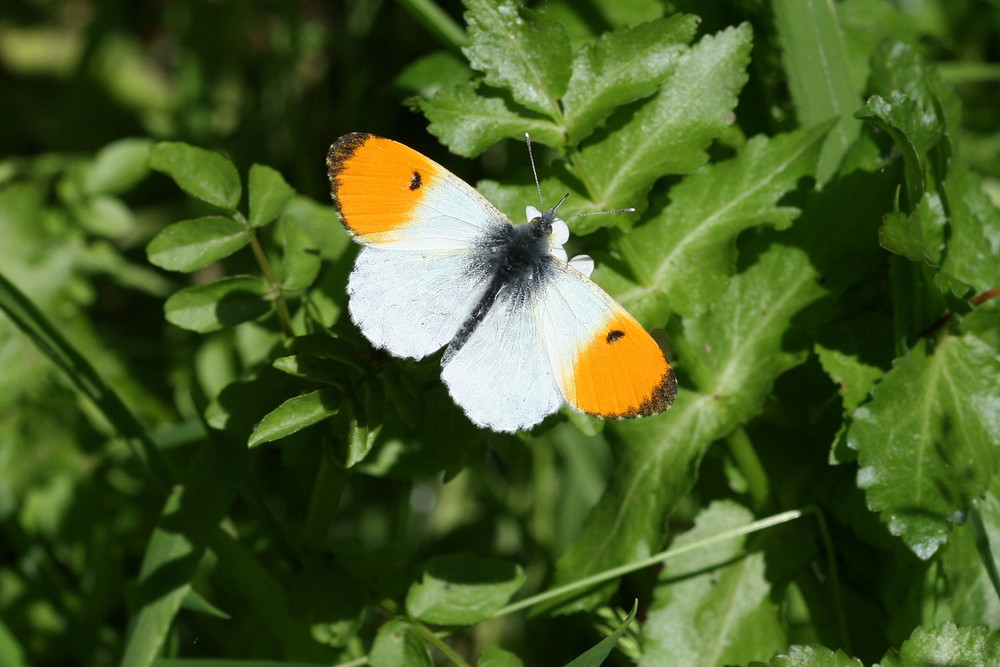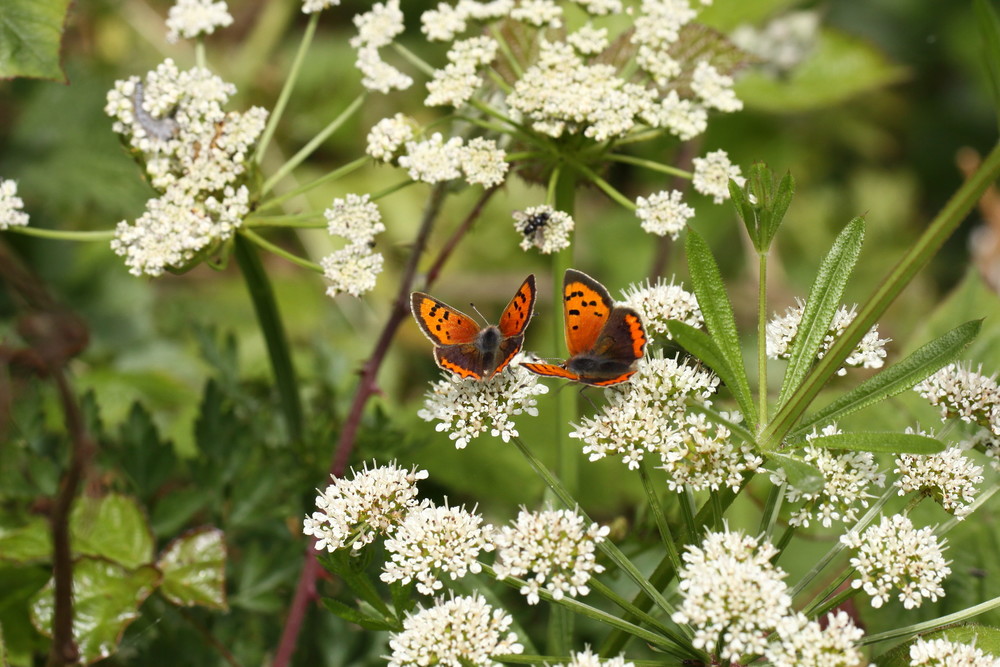
Orange tip butterfly,
pictures by Richard Perchard
A ten-year study of Jersey’s butterfly population has shown that overall the Island’s species have declined, but at a lower rate than the UK.
The Department of the Environment has co-ordinated the Jersey Butterfly Monitoring Scheme (JBMS) for the last ten years, depending on a team of unpaid volunteers who count butterflies each week throughout the spring and summer at 38 locations across Jersey.
Over the last ten years, the volunteers have walked more than 3,600 miles, and counted 122,279 butterflies at 38 locations covering all Jersey’s main habitats
The results of their work have been analysed and recently published by the Department of the Environment working with the UK organisation Butterfly Conservation. The scheme is one of the ways Jersey meets its international environmental obligations and it performs a vital service in helping the department understand how Jersey’s environment is changing.
As insect pollinators with a short life span, butterflies are considered to be an early warning system for the health of local environments. Schemes identical to the Jersey Butterfly Monitoring Scheme are used across the world to monitor changes in local habitat and climate.
The JBMS study looked at ten years of figures with the aim of finding out more about the overall butterfly population, the state of health of individual butterfly species and the relationship between the state of our butterfly population and habitat change in urban and country locations.
The results indicate there has been an overall decline in most of Jersey’s butterfly populations since recording started in 2004, especially in agricultural and urban sites, but that semi-natural sites, managed for their nature conservation interest, are mostly doing well.
Jersey’s total monitored butterfly population shows an overall 14 per cent fall compared to the UK, where over the same period the butterfly population declined by 29 per cent. Of the Island’s 24 common butterfly species, ten (41%) show population decreases while 14 (59%) show increases.
Principle Ecologist for the Department of the Environment John Pinel said, “This report on 10 years of butterfly monitoring in Jersey demonstrates the incredible power of citizen science. The evidence that it presents on the condition of our island environment is incontrovertible, and our thanks go to the many volunteers, whose passion has made such a report possible.”
The best habitats for butterflies in Jersey are all semi-natural ones such as sand dunes, scrublands, heath, natural grasslands and wet meadows and most butterflies are in the west and north of Jersey, where there are fewer people and less agriculture. The same pattern’s been shown in Europe, where butterfly populations have declined in agricultural and urban areas as their habitat has been lost or damaged.
It is hoped that people can help reverse the decline in some of Jersey’s butterfly populations by small changes in habitat management such as the planting of insect friendly flowers in parks and gardens, the restoration of hedgerows and grassy verges and timing non-branchage related cutting so that it doesn’t interrupt the insects’ life cycles.

Small copper butterfly




